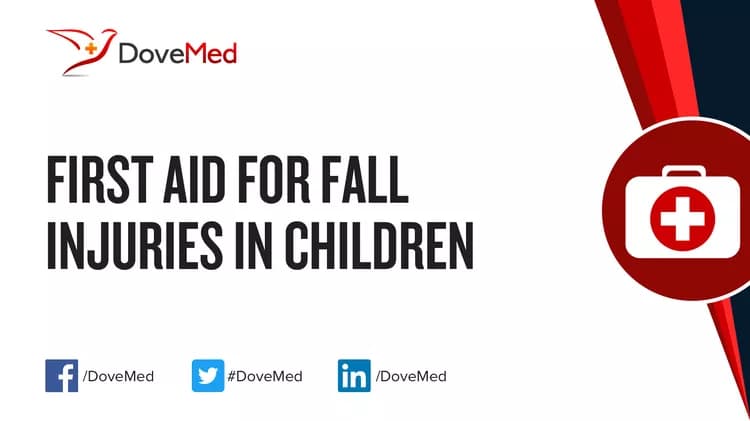What is Fall Injuries in Children?
- Fall injuries are common in children below the age of 18 years (infants, young and old children). Even though most fall injuries are non-serious, injuries sustained from falling from heights remains the leading cause of death in children around the world
- Apart from falling from heights, Fall Injuries in Children may take place due to falling while playing, running, walking, or during participation in various athletic activities and sports
What are the Causes of Fall Injuries in Children?
Fall Injuries in Children may be caused by the following factors:
- Participation in recreational and competitive sporting activities
- Slipping on smooth or wet surfaces
- Losing balance while using staircases, on playground equipment
- Tripping over objects at home (rugs and loose carpets)
- In infants and babies, falling from prams, baby cots, and walkers
What are the Signs and Symptoms of Fall Injuries in Children?
The signs and symptoms of Fall Injuries in Children may include:
- Lacerations
- The injured site is swollen and painful
- Bruises and contusions
- Injury to the arms, legs, and head
- Fracture of the bones - affecting the wrist, shoulder, arm, or skull bones
- Injury to the spinal cord that may be mild or severe
- Falling onto sharp or blunt objects may result in internal body injury including internal bleeding
How is First Aid administered for Fall Injuries in Children?
First Aid tips for Fall Injuries in Children:
- Calling 911 (or your local emergency number) immediately, if:
- There is heavy bleeding from the injury site; or, bleeding from the nose, ears, or mouth
- A head, neck, back, or hip injury is suspected
- There is difficulty in breathing
- The child is unable to move or is unconscious
- For minor fall injuries, the following may be considered:
- Comfort the injured child
- Clean visible wounds with water
- Apply an ice pack to injury site to reduce swelling and pain; do not apply ice directly to the skin, but wrap it in a cloth or towel
- Stop any bleeding by applying pressure, using a sterile dressing or a clean cloth
- In case of a fracture, try to immobilize the site (if you are trained to do so)
- In case no injury is evident, ask them to rest (stay seated or lie down) for a while before slowly helping them stand up
- It is important to monitor them for the next 1-2 days to ensure that there are no other new symptoms
- A tetanus shot may be necessary, in case of an open cut/wound
- Take the child to emergency room (ER) for further treatment, if warranted (such as if the child is vomiting following a head injury or other unusual signs are noticed)
- For an older child, administer an over-the-counter painkiller, if the pain is severe (per advice of the healthcare provider)
Who should administer First Aid for Fall Injuries in Children?
Any bystander can administer first aid; however, the affected individual must seek medical assistance for a definitive management of fall injuries.
What is the Prognosis of Fall Injuries in Children?
- The prognosis of Fall Injuries in Children is generally good in most cases, with appropriate first aid treatment and home care
- Children who fall from significant heights (onto hard surfaces) are at a risk for severe injuries including permanent disabilities. In such cases, the prognosis depends on the severity of the injuries and the promptness with which treatment is provided
How can Fall Injuries in Children be Prevented?
A few helpful tips to prevent Fall Injuries in Children:
- Fall-proof the home; address slippery smooth surfaces that poses risk for falls, and address issues of loose rugs, mats that curl at the ends, etc.
- Do not place furniture or small shelves near windows that have no proper safety grills; small children are often curious and may climb on furniture to see what is happening outside
- Avoid leaving infants and small babies unattended in spaces (on beds, furniture, car seats without securing them) where there is a risk for a fall
- Ensure safety of small children by strapping them to high chairs and shopping carts (when they are on them); do not let children play with shopping carts on their own
- Educate and train children to be safe; supervise young children at play and advise them to play safely
- Ensure that children are using proper protective gear such as helmets while playing on scooters, cycles, or while skateboarding
- Children with physical disabilities are at a higher risk for falling, and hence, need to be constantly supervised/monitored
What are certain Crucial Steps to be followed?
- Call 911 (or your local emergency number) immediately, if the hip, spine, or head is involved
- Monitor the condition of the child who recovered from falls, for a few days after the incident
Related Articles
Test Your Knowledge
Asked by users
Related Centers
Related Specialties
Related Physicians
Related Procedures
Related Resources
Join DoveHubs
and connect with fellow professionals


0 Comments
Please log in to post a comment.